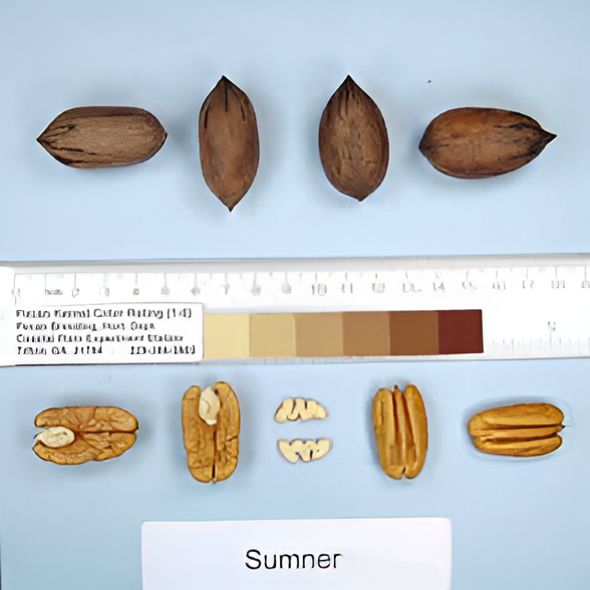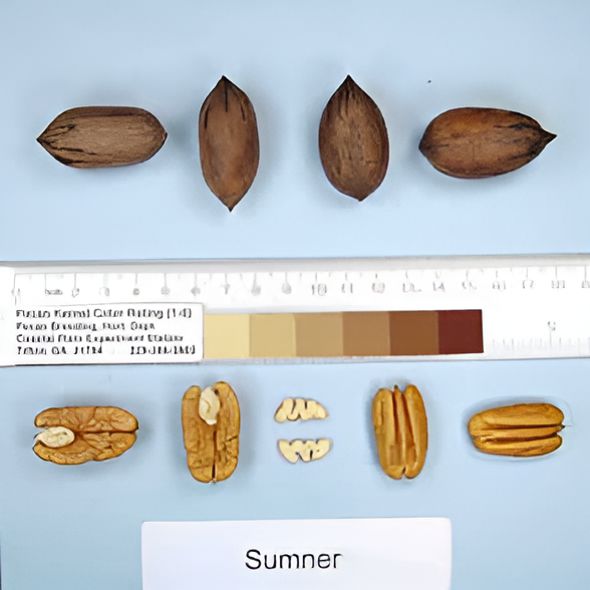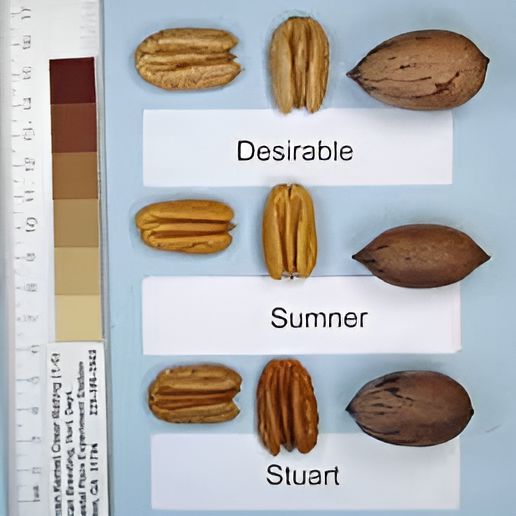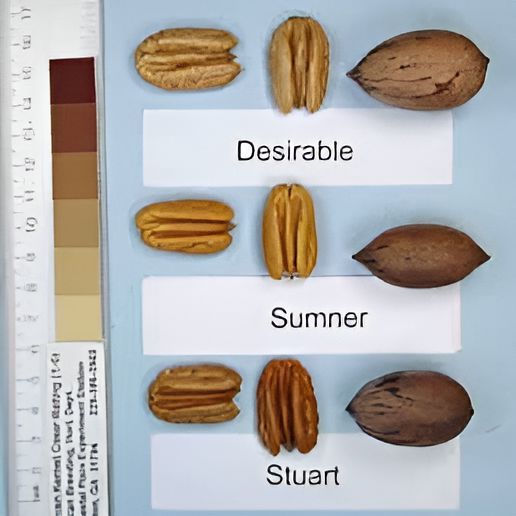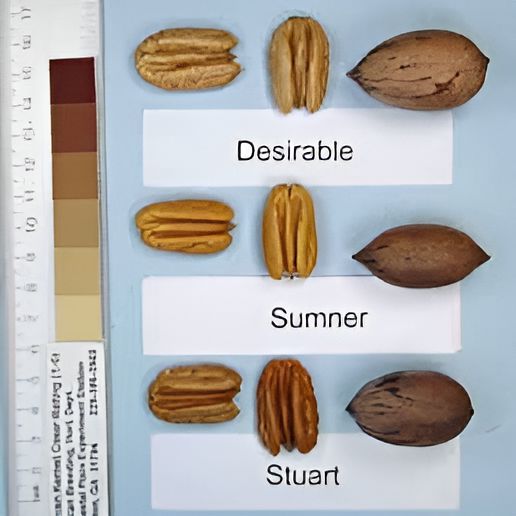Sumner Pecan is a large deciduous tree known for it abundant yield of large high quality nuts that shell easily, though it is harvested late. The compound green leaves turn yellow-brown in fall. Grows best in full sun and rich, moist well-drained soils. Sumner is resistant to scab, but susceptible to black aphids. A type-2 pollinator.
|
Type: |
|
|
Origins: |
South Central N. America |
|
Height: |
70’ - 100’ |
|
Spread: |
40’ - 70’ |
|
Spacing: |
55’ |
|
USDA Hardiness Zone: |
6 - 9 |
|
Culture: |
|
|
Bloom Color: |
Green |
|
Season of Interest: |
MAINTENANCE NEEDS: Low maintenance. Difficult to transplant due to taproot. Large trees can produce considerable litter with twigs, leaves, and nuts. No serious disease or pests. Hickory bark beetle, pecan weevil, borers and twig girdler can be problems in some areas. White heart rot, anthracnose, leaf blotch, powdery mildew, leaf spot, cankers, catkin blight, crown gall and scab are occasional diseases.
LANDSCAPE USES: Specimen planting or mass plantings, Woodland Garden, Naturalized Areas, Native Garden, and Shade Tree.
COMPANION PLANTS: Yellow Birch, Oakleaf Hydrangea, Bottlebrush Buckeye
IMAGE: Photos by Pecan Breeding UGA, Sumner
*As plants have ranges in appearance they may not appear as the images shown.


